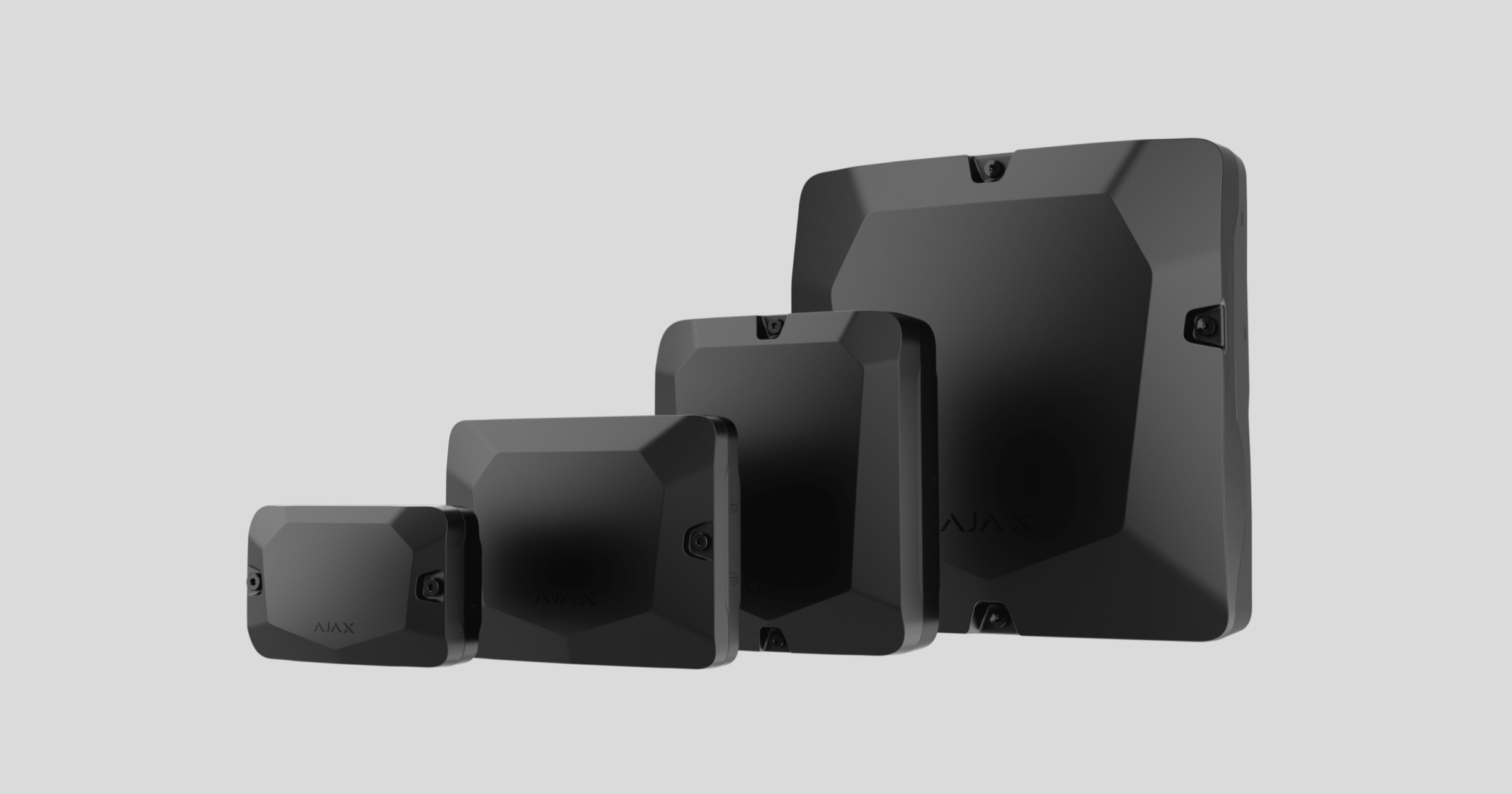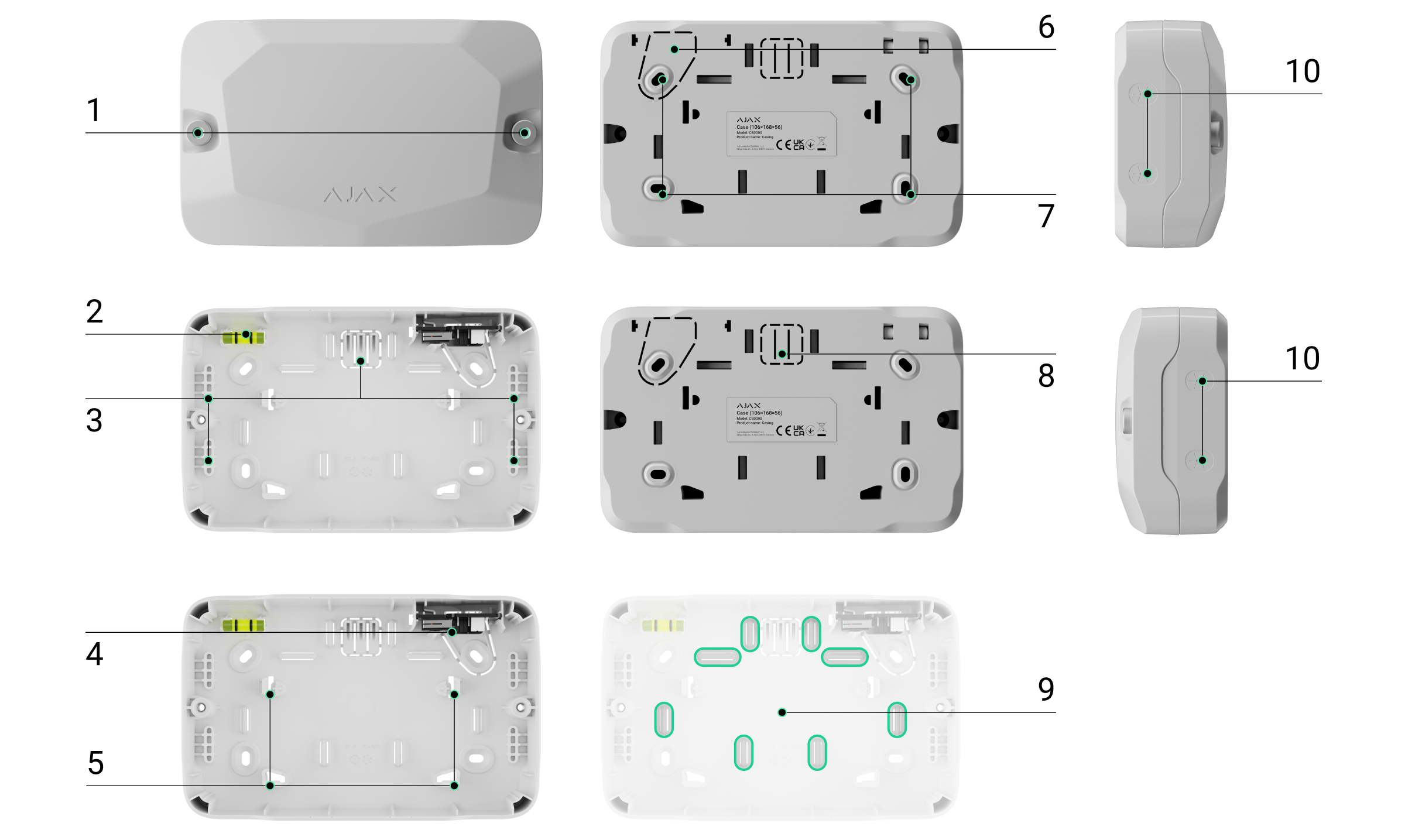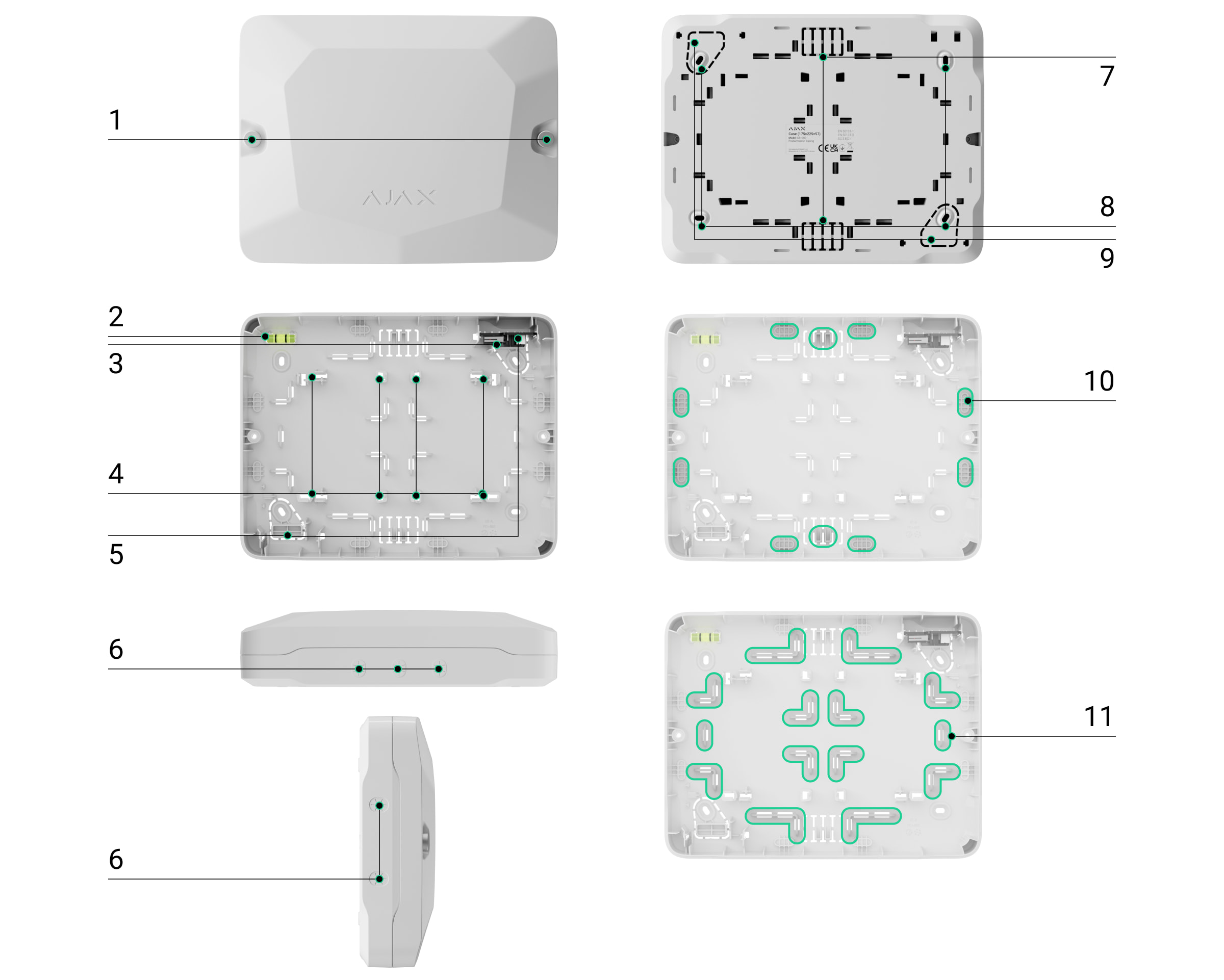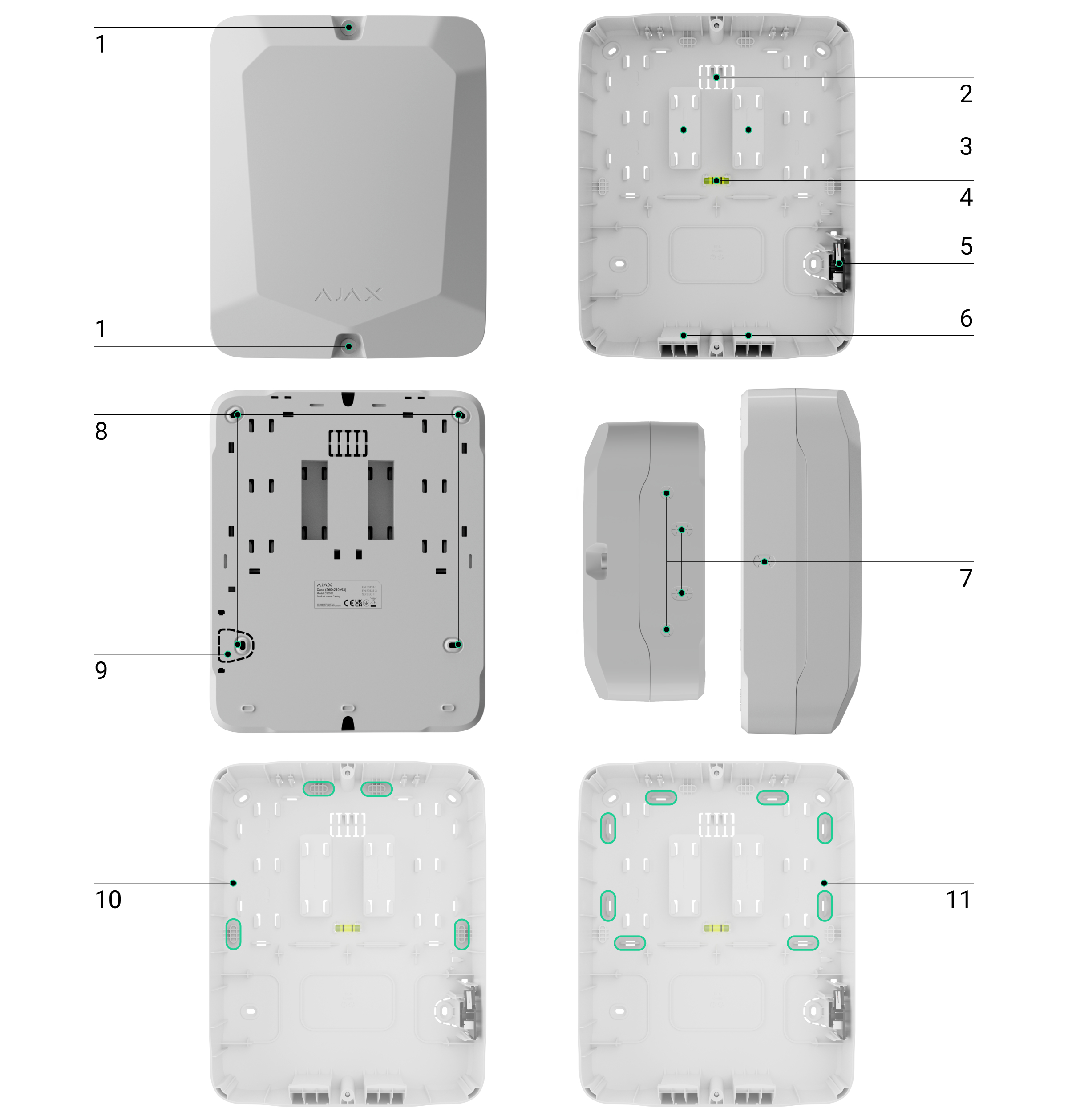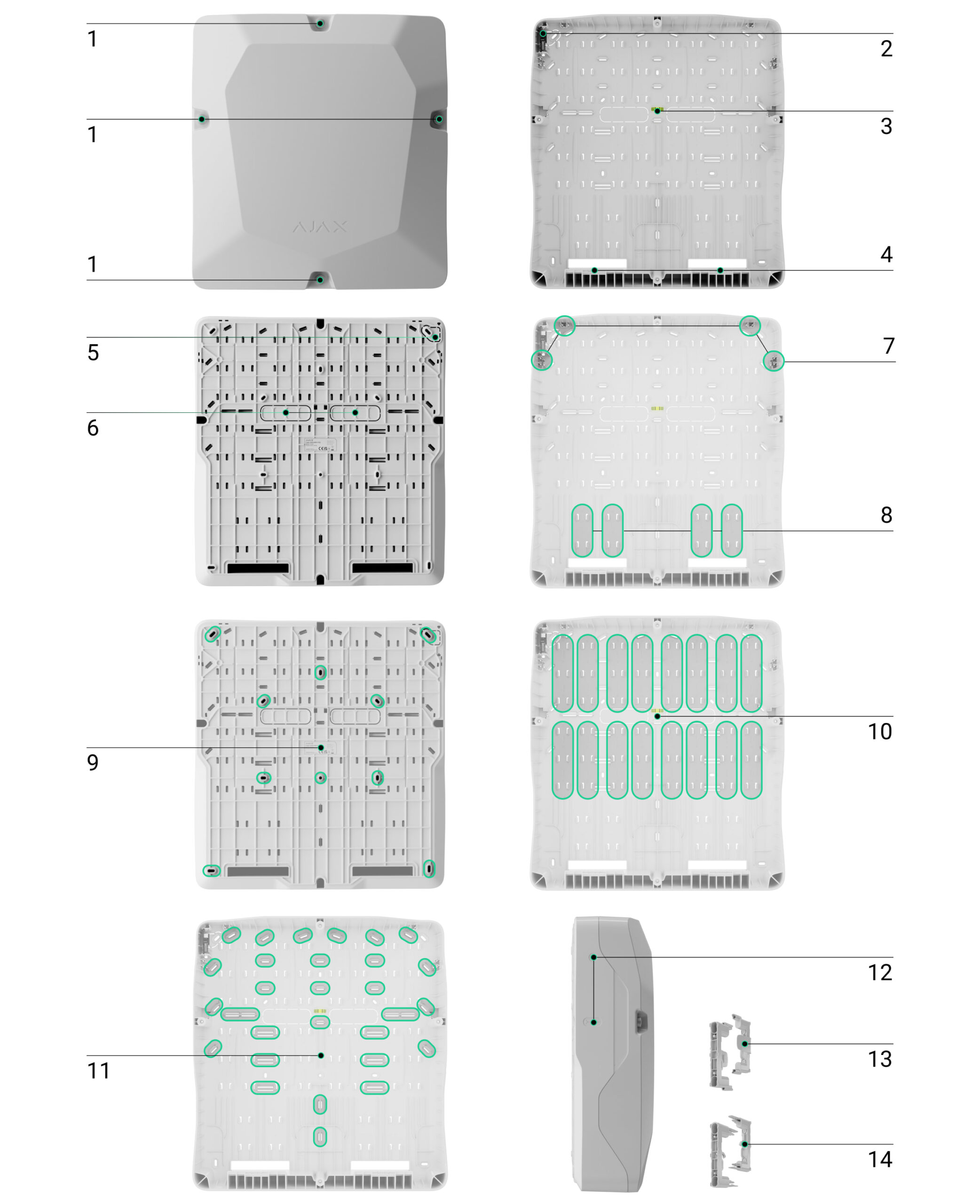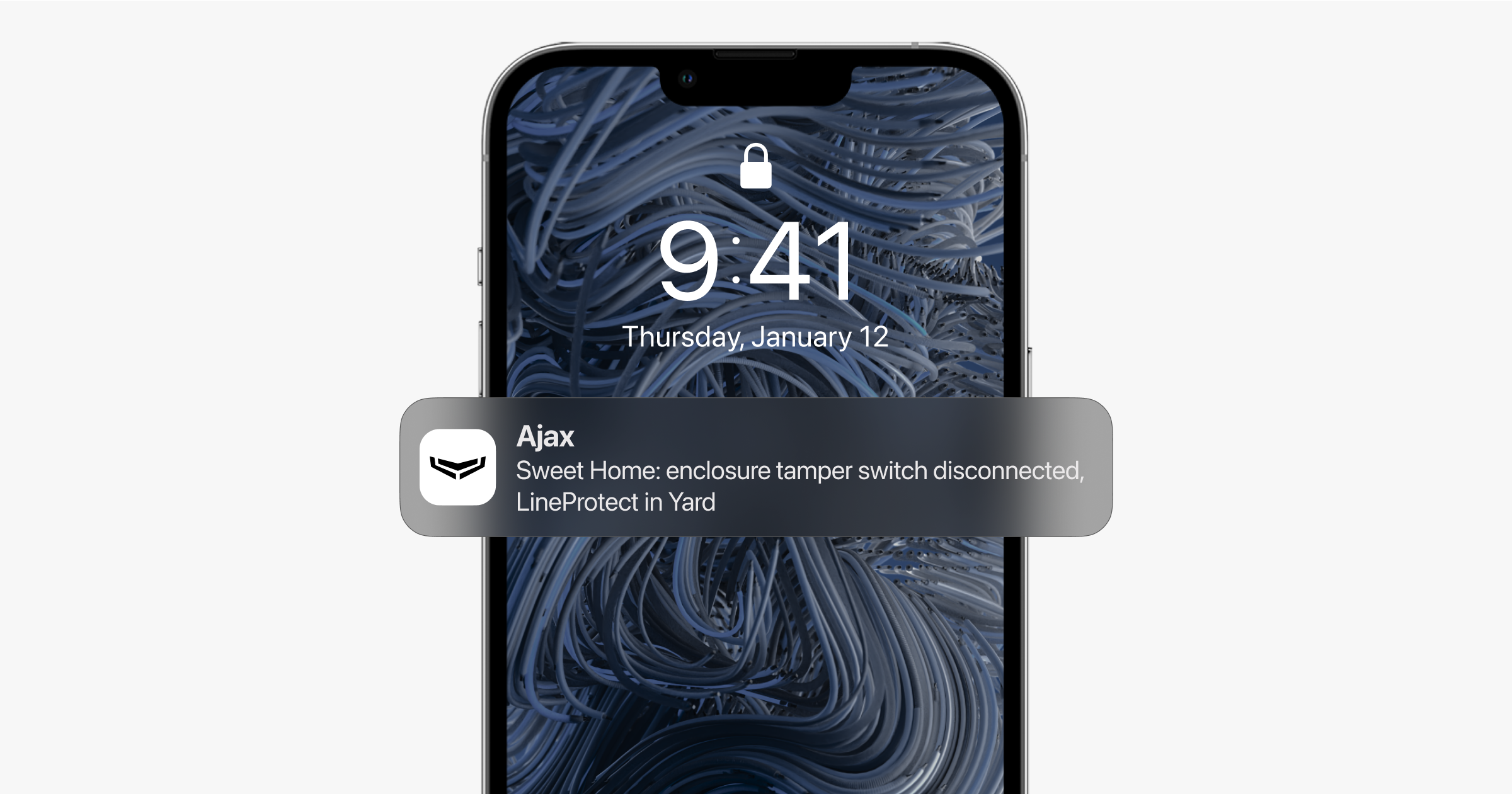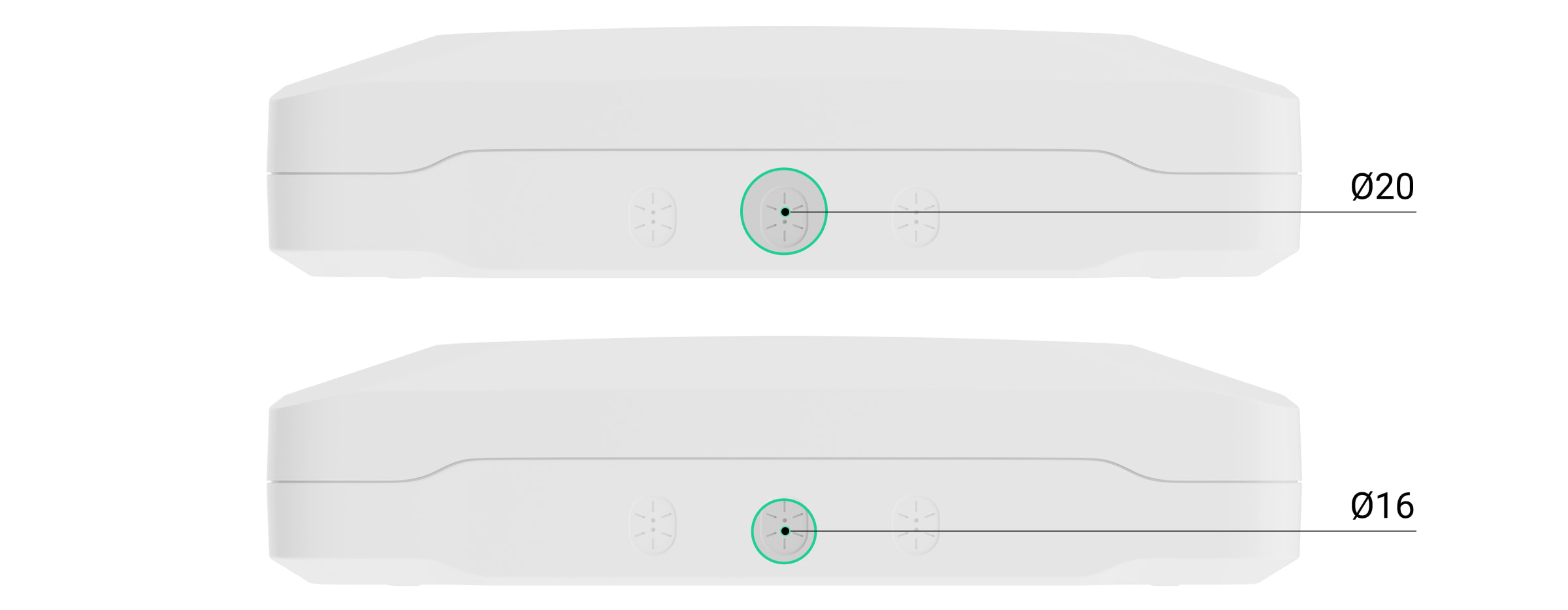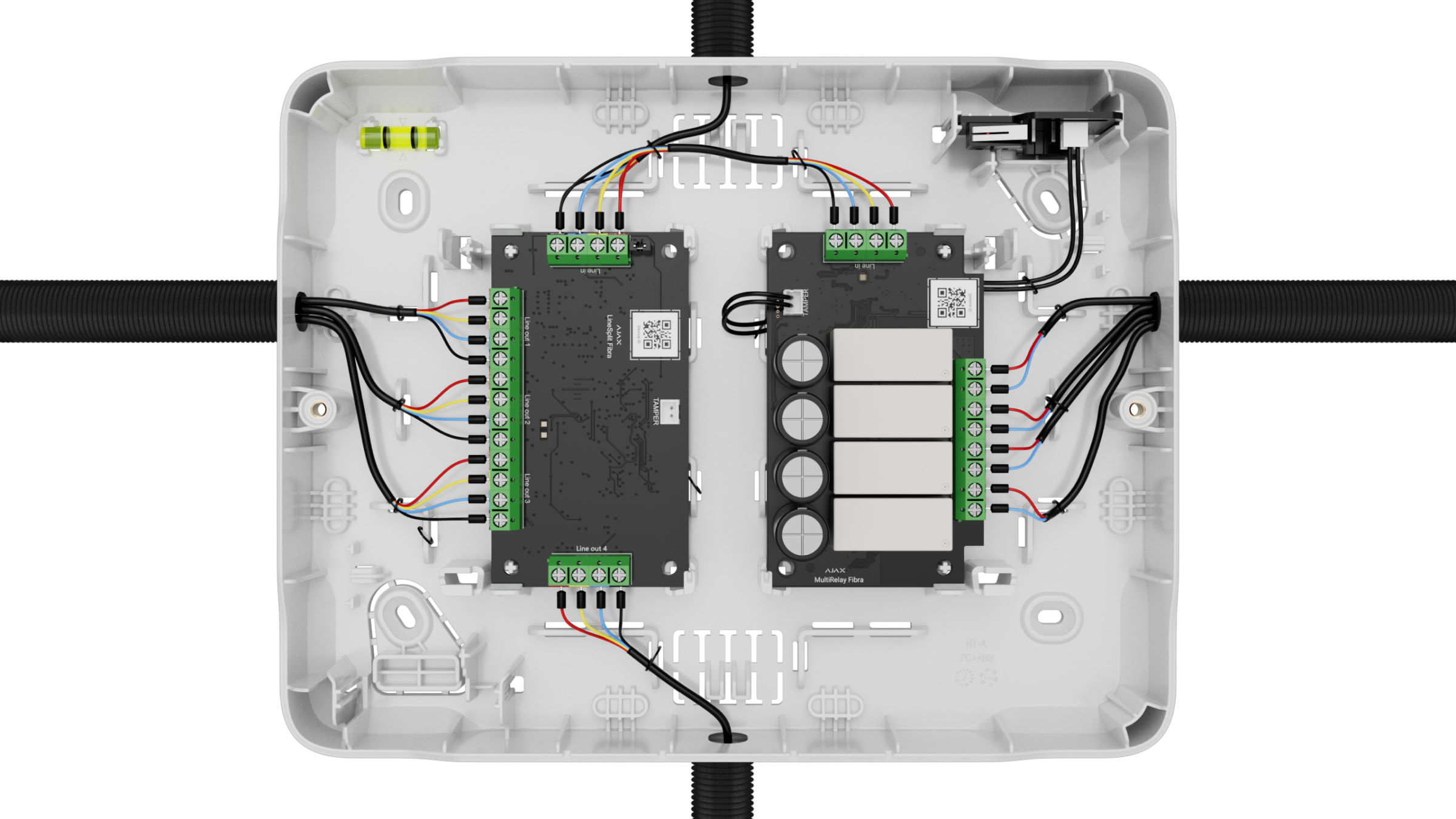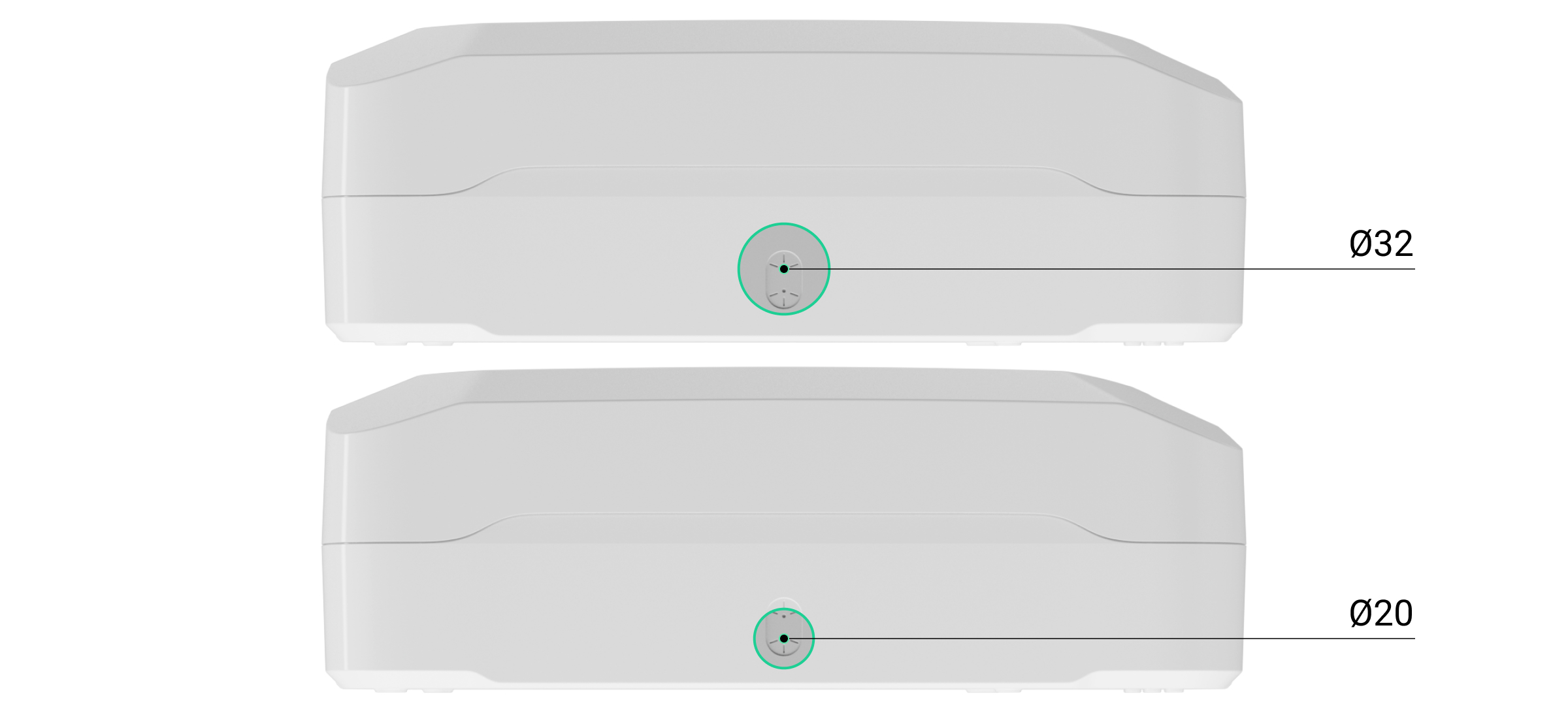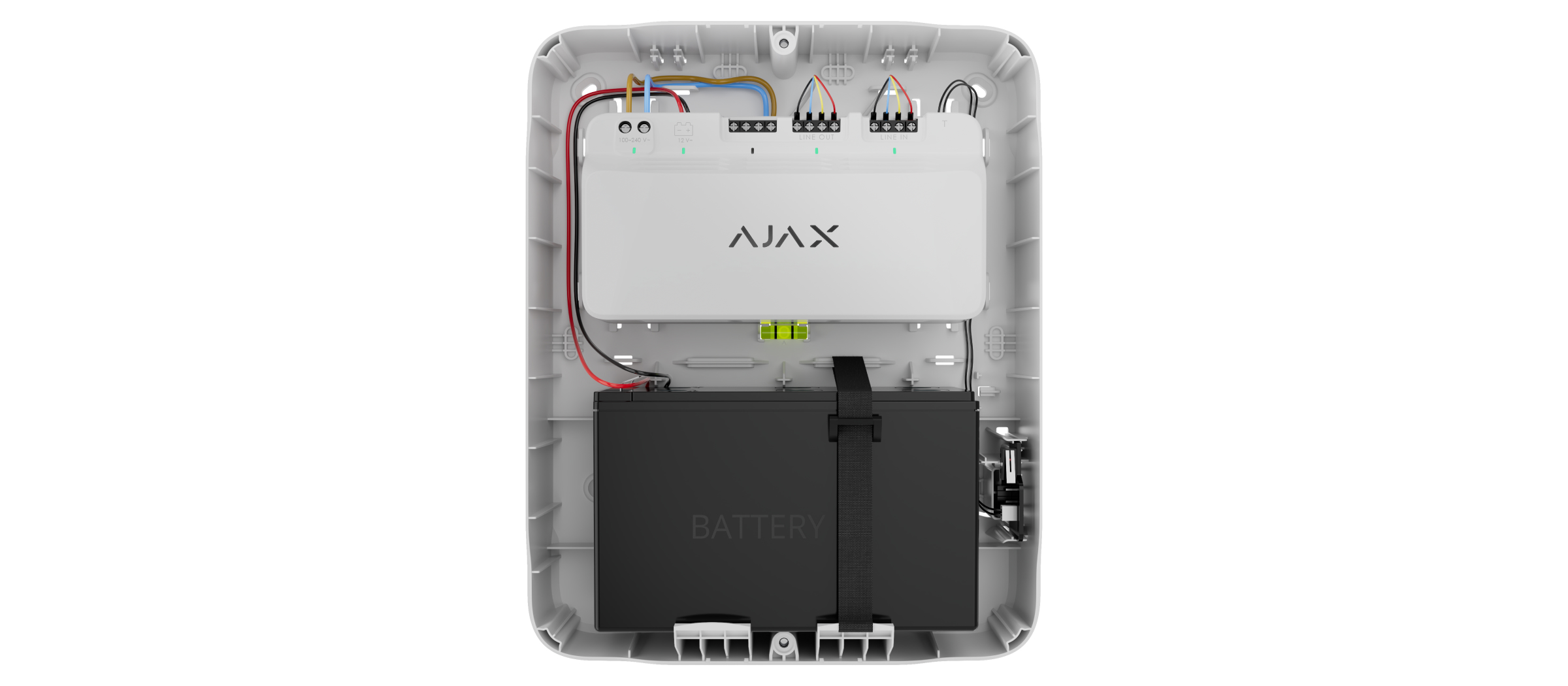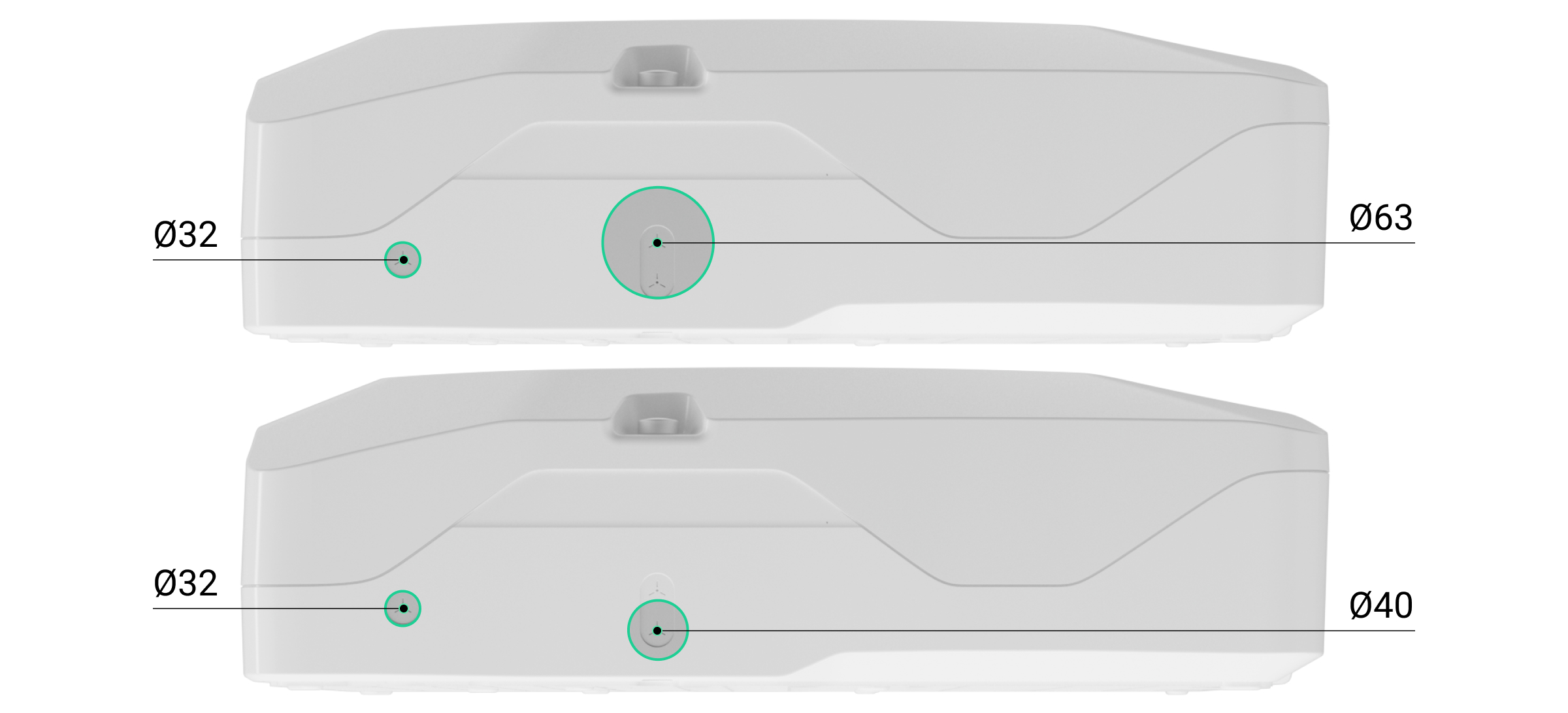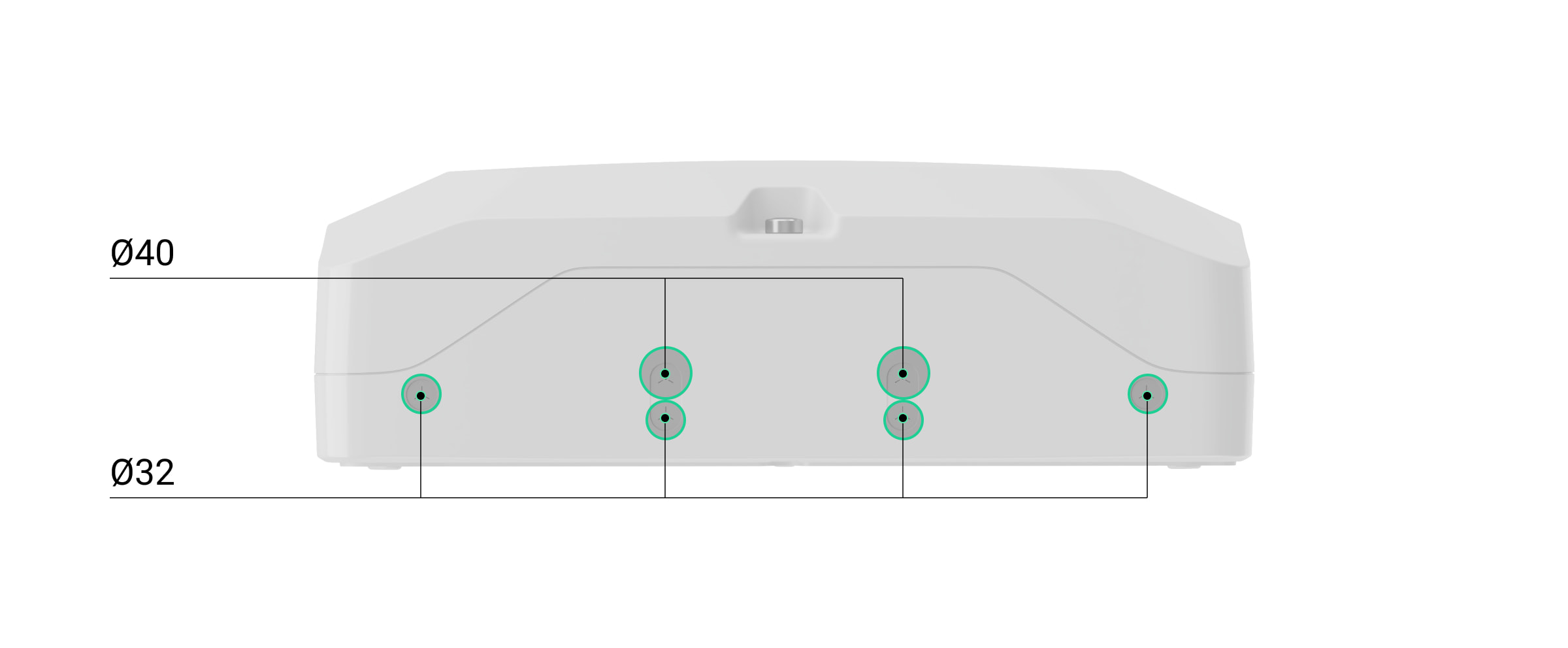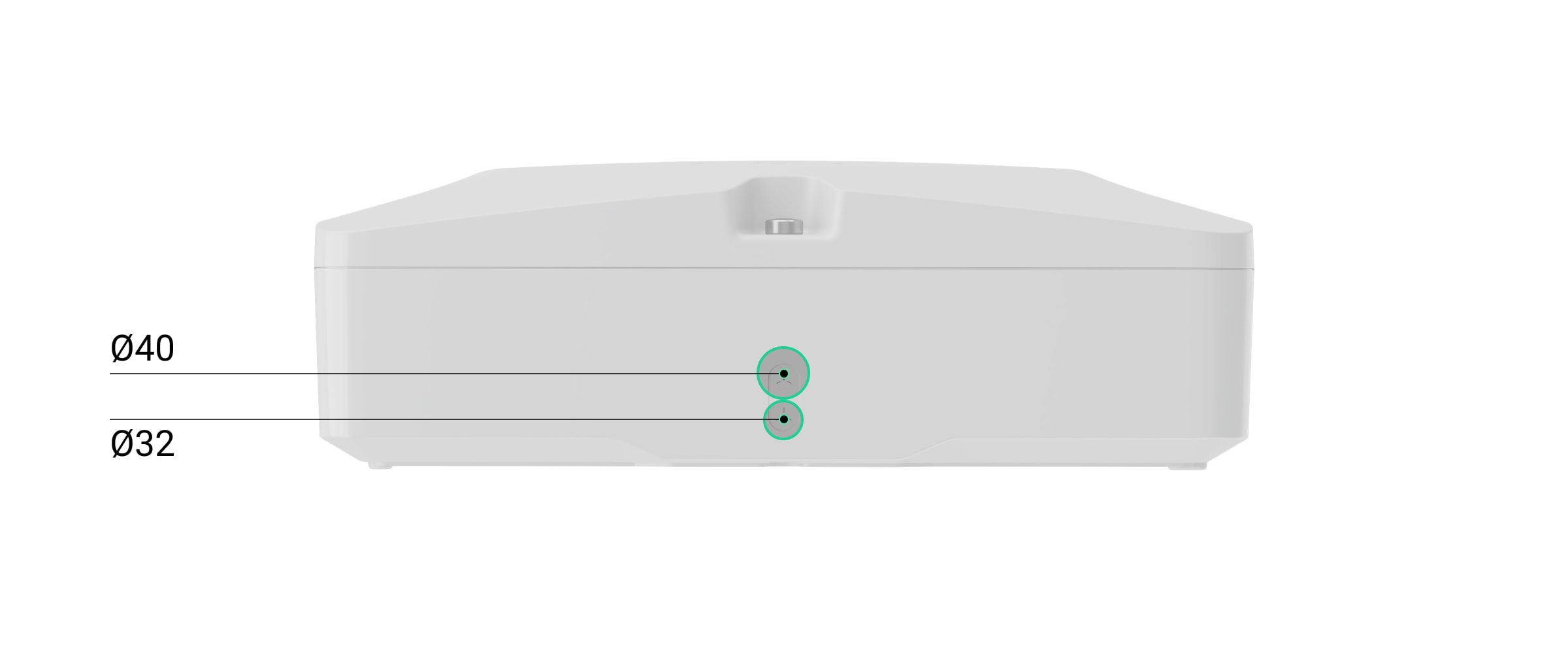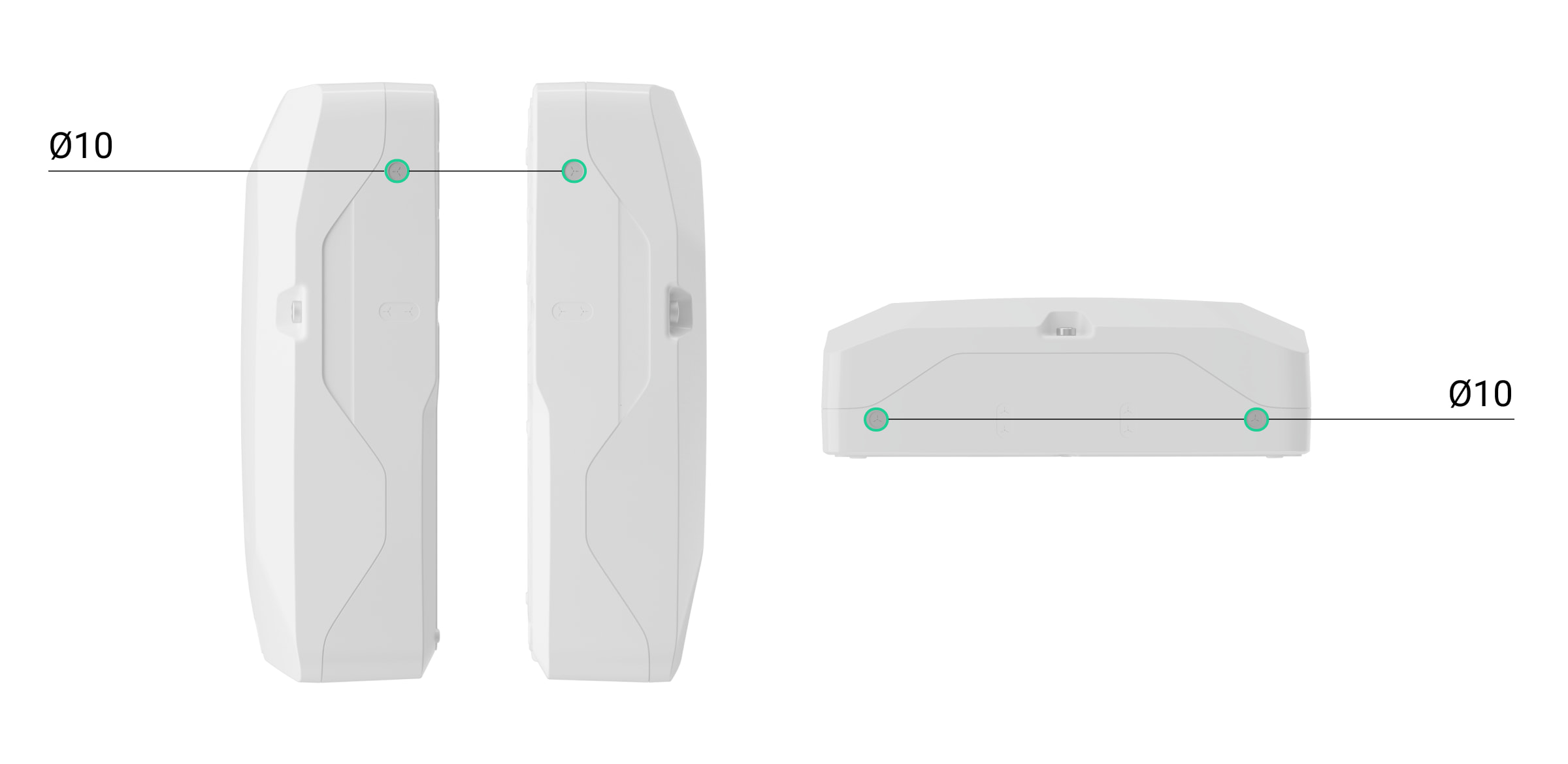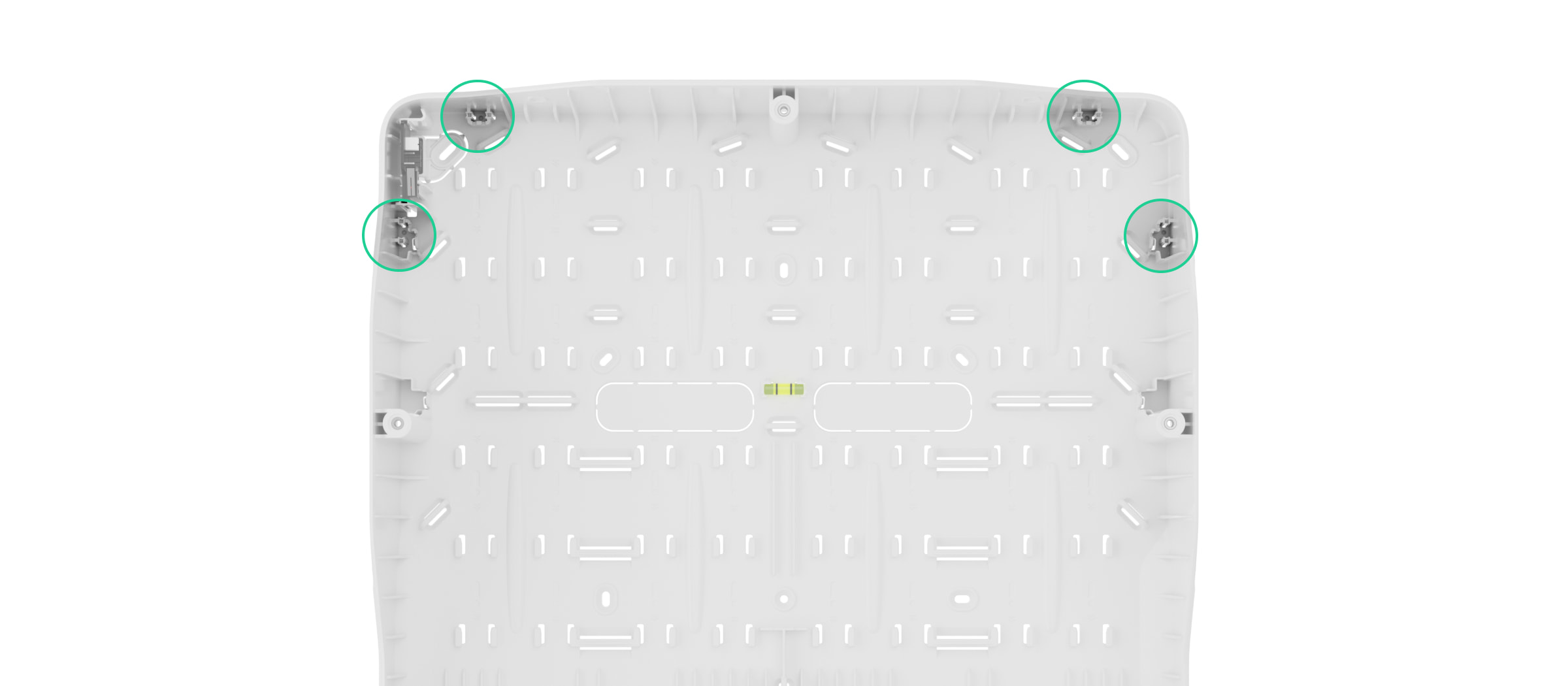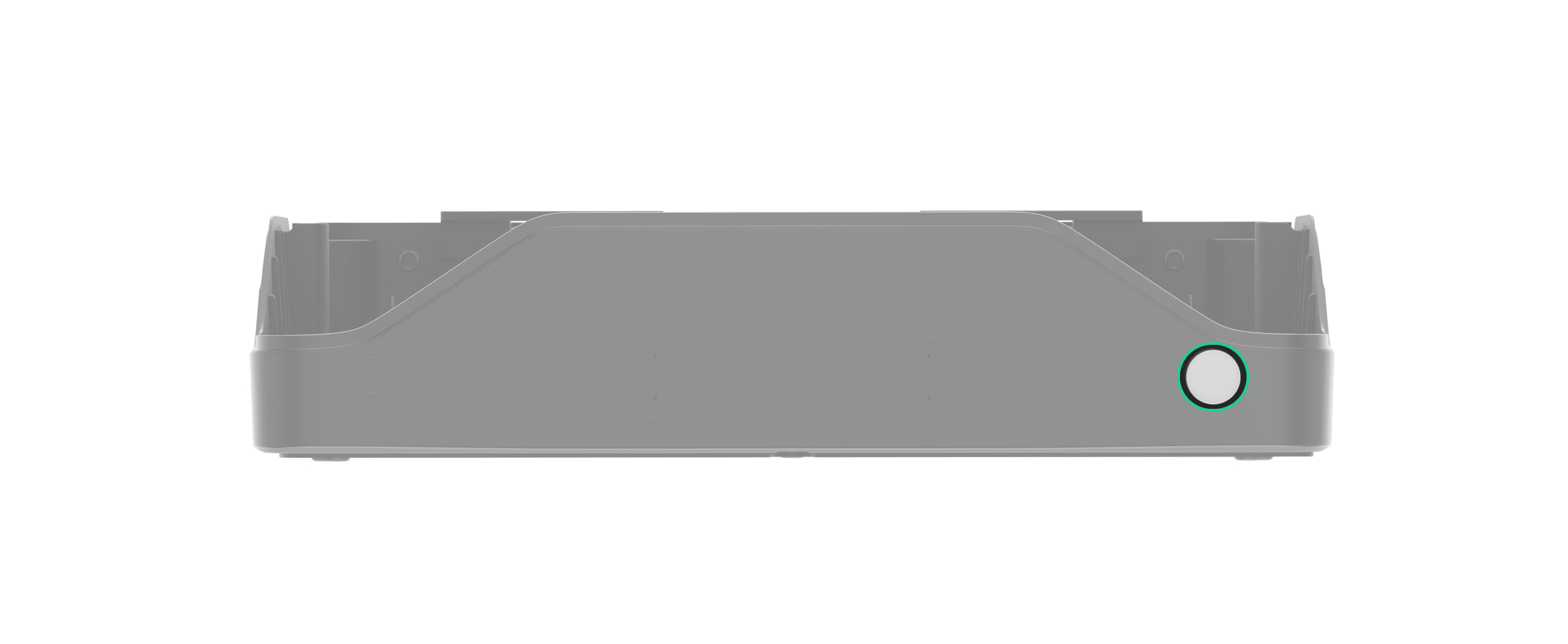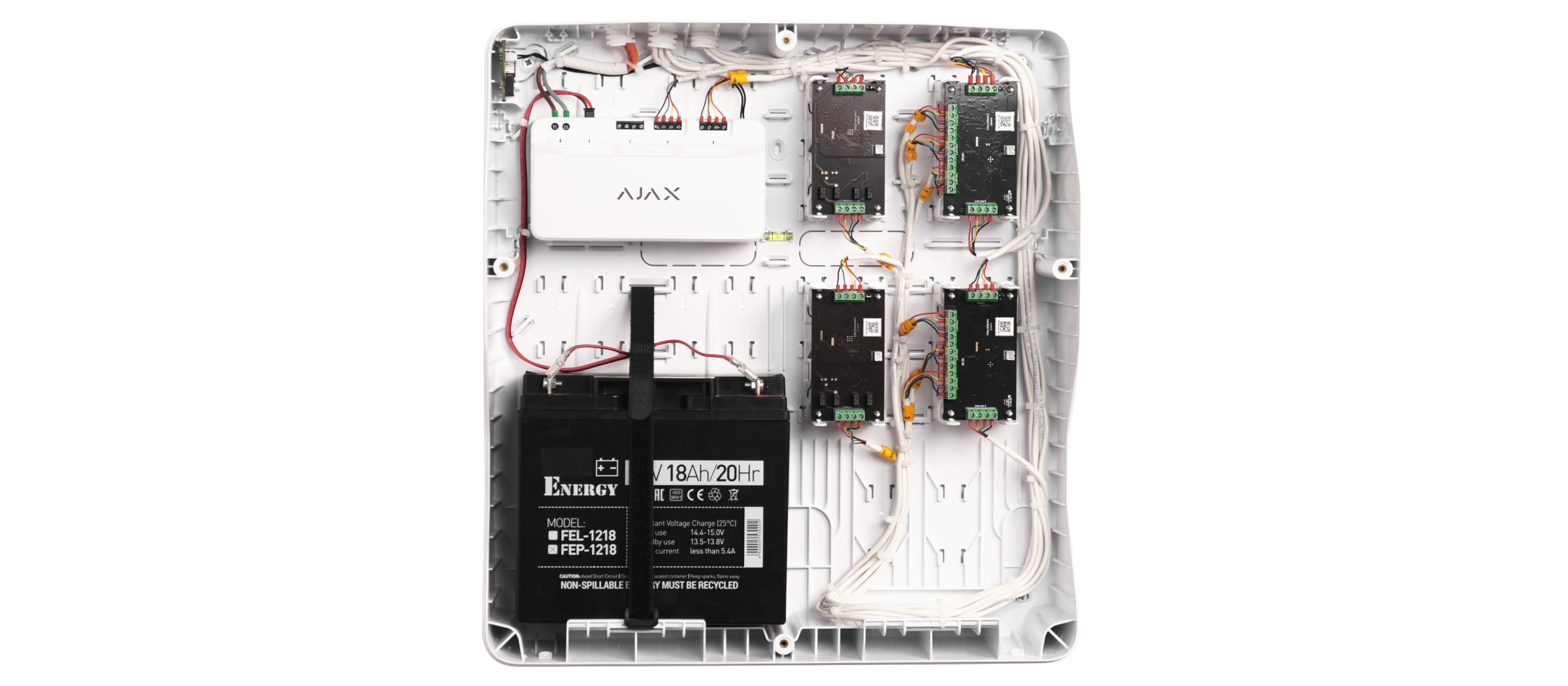Case é o invólucro concebido para instalar um ou mais dispositivos Ajax compatíveis. O conjunto completo inclui a placa de sabotagem para proteger os dispositivos contra sabotagem. A caixa tem fixadores para fixar os cabos e canais para uma organização cómoda dos cabos. A caixa destina-se a ser utilizada exclusivamente em interiores.
A mala é produzida em várias versões. Cada modelo tem um número diferente de ranhuras, consoante a combinação de dispositivos:
- Case A (106) — um dispositivo Ajax;
- Case B (175) — até dois dispositivos Ajax;
- Case C (260) — um dispositivo Ajax e uma bateria de 7 Ah;
- Case D (430) — até oito dispositivos e duas baterias de 18 Ah.
Elementos funcionais
- Parafusos de fixação da tampa da caixa. Pode ser desaparafusado com uma chave hexagonal (Ø 4 mm) incluída no pacote.
- Nível de bolha para verificar o ângulo de inclinação da montagem durante a instalação.
- Rolhas para proteger um dispositivo durante a perfuração.
- A placa de sabotagem com um fio para ligar um dispositivo Ajax.
- Fechos para fixar um dispositivo.
- Parte perfurada da carcaça. Não o parta. Esta parte é necessária para o acionamento de um dispositivo de sabotagem em caso de tentativa de desprender o invólucro da superfície.
- Furos para fixar o invólucro à superfície.
- Parte perfurada para passar os fios.
- Fixadores para fixar os cabos com braçadeiras.
- Recortes para efetuar os furos de forma cómoda.
Dispositivos compatíveis
O número de dispositivos instalados na caixa depende das dimensões da caixa e da sua configuração.
| Dispositivos/Caixas | Case A (106) 1 dispositivo |
Case B (175) até 2 dispositivos |
Case C (260) 1 dispositivo |
Case D (430) até 8 dispositivos |
| Superior LineSplit Fibra | + | + | – | + |
| Superior LineProtect Fibra | + | + | – | + |
| Superior MultiRelay Fibra | + | + | – | + |
| Superior LineSupply (45 W) Fibra | – | – | + | + |
| Superior LineSupply (75 W) Fibra | – | – | + | + |
| Superior Hub Hybrid (4G) (without casing) | – | – | – | + |
| Superior MultiTransmitter Fibra (without casing) | – | – | 1 | 2 |
| bateria de 7 Ah | – | – | 1 | 2 |
| bateria de 9 Ah | – | – | – | 2 |
| bateria de 18 Ah | – | – | – | 2 |
Principais características
A mala tem fechos para fixar dispositivos sem ferramentas. Deslize o trinco para retirar o dispositivo.
O dispositivo é fixado em duas posições. Pode rodá-la 180°.
O invólucro possui uma placa de proteção. Liga-se ao dispositivo Ajax com um fio no conjunto completo. O sistema de tamper detecta tentativas de abrir a tampa ou de separar o invólucro da superfície. No caso de uma tentativa de sabotagem, os utilizadores e o CMS receberão uma notificação sobre a ativação da sabotagem do dispositivo.
A Case tem fixadores para fixar os cabos com atilhos e canais para um encaminhamento cómodo dos cabos. A caixa tem partes perfuradas para passar os cabos pela parte de trás. Existem reentrâncias para colocar convenientemente o berbequim (no caso de ser necessário fazer furos e passar os cabos ao longo do lado, em baixo ou em cima). Durante a perfuração, a ferramenta assenta em batentes de plástico, assegurando a proteção dos dispositivos instalados.
A tampa do Case A (106) ou do Case B (175) pode ser rodada 180° durante a instalação.
O nível de bolha é fornecido para verificar o ângulo de inclinação do suporte durante a instalação. Os orifícios mais largos asseguram a instalação correta do invólucro, mesmo em caso de erros durante a instalação.
O Case C (260) e o Case D (430) têm suportes de bateria na parte inferior da caixa para evitar que se desloquem acidentalmente. A faixa de retenção para fixar a bateria está incluída no Case D (430).
A Case D (430) tem dezasseis ranhuras para suportes de plástico para a instalação dos módulos Fibra. Os suportes estão disponíveis em duas versões:
- Module Holder (type A) para Superior LineSplit Fibra, Superior LineProtect Fibra, Superior MultiRelay Fibra;
- Module Holder (type B) — para Superior Hub Hybrid (4G) (without casing) e Superior MultiTransmitter Fibra (without casing).
Existem quatro Module Holder (type A) no conjunto completo. Os suportes adicionais e o Module Holder (type B) são vendidos em separado.
O Superior LineSupply Fibra não necessita de suportes para a instalação.
Seleção do local de instalação
É aconselhável escolher um local de instalação onde a Case esteja escondida de olhares curiosos – por exemplo, na despensa. Isto ajudará a reduzir a probabilidade de sabotagem do sistema. Note que o dispositivo se destina apenas a instalação no interior.
O local de instalação da caixa deve respeitar as recomendações de montagem dos dispositivos instalados na caixa.
Siga estas recomendações ao conceber o projeto do sistema Ajax para um objeto. O sistema deve ser concebido e instalado por profissionais. A lista de parceiros autorizados do Ajax está disponível aqui.
A caixa não pode ser instalada
A caixa pode ficar danificada se a instalar:
- No exterior.
- Dentro de instalações com valores de temperatura e humidade que não correspondem aos parâmetros de funcionamento.
Preparar a instalação de dispositivos no Case
Qual Case escolher
Utilize o configurador de Case para obter a melhor colocação dos seus dispositivos Fibra na carcaça.
Disposição dos cabos
Ao preparar o encaminhamento dos cabos, verifique os regulamentos de segurança eléctrica e contra incêndios da sua região. Respeite rigorosamente estas normas e regulamentos. Estão disponíveis sugestões para a disposição dos cabos em este artigo.
Passagem de cabos
Recomendamos que leia atentamente a secção Selecionar o local de instalação antes da instalação. Evite desvios em relação ao projeto do sistema. A violação das regras básicas de instalação e das recomendações deste manual pode levar a um funcionamento incorreto e à perda de ligação com os dispositivos instalados na caixa.
Preparação dos cabos para a ligação
Remova a camada isolante e descasque o cabo com um descascador de isolamento especial. As extremidades dos fios inseridos nos terminais do dispositivo devem ser estanhadas ou cravadas com uma manga. Isto garante uma ligação fiável e protege o condutor da oxidação.
Instalação
Antes da instalação, certifique-se de que selecionou o local ideal para o invólucro e que este cumpre os requisitos deste manual.
- Preparar previamente os orifícios para os cabos: fazer os orifícios no fundo ou no lado do invólucro ou partir a parte perfurada na parte de trás da caixa. Recomendamos a utilização de uma serra de furos para plástico de Ø16 mm ou Ø20 mm.
Introduzir o tubo, o tubo corrugado ou a conduta nos orifícios do revestimento.
- Passe os cabos e conduza-os através dos orifícios previamente preparados. Fixe a Mala na superfície vertical ou horizontal no local de instalação selecionado com os parafusos fornecidos, utilizando todos os pontos de fixação. Um deles encontra-se na parte perfurada por cima da tampa – é necessário para acionar a tampa se alguém tentar separar o invólucro.
- Fixar o aparelho na caixa. Ligar os cabos aos terminais correspondentes. Fixe os cabos com braçadeiras utilizando fixadores.
- Ligar a placa de tamper ao conetor de dispositivo adequado.
- Coloque a tampa sobre a carcaça e aperte-a com os parafusos fornecidos.
- Verificar o estado da tampa na aplicação Ajax. Se a aplicação mostrar o estado tampa frontal aberta, verifique o aperto da Case.
Manutenção
O dispositivo não requer manutenção.
Características técnicas
Garantia
A garantia dos produtos da sociedade de responsabilidade limitada “Ajax Systems Manufacturing” é válida durante 2 anos após a compra.
Se o dispositivo não funcionar corretamente, contacte primeiro o Apoio Técnico Ajax. Na maioria dos casos, os problemas técnicos podem ser resolvidos remotamente.
Contactar o Apoio Técnico:
Fabricado por «AS Manufacturing» LLC
